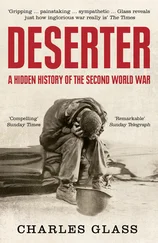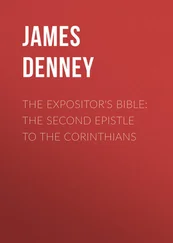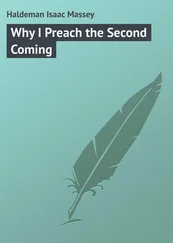The first recorded attempt to escape Goas occurred in 1930, when a Boer farmer named S. J. Dupreez tried to trade the farm for a lusher parcel upcountry.
OFFICE OF THE MAGISTRATE
KARIBIB
12 JULY 1930
My dear Sir,
As you no doubt know I have been a heavy loser of stock, having lost all owing to the latest drought. It was my intention to quit the country altogether but owing to the pleas of my motherless and unmarried daughter Grieta I have decided to try again but in another district. With this end in view I paid a visit to the north and was very much taken with the east side of Outjo District, particularly the vacant farm Weiseenfels. What I propose to do is effect an exchange of my farm Goas with that of Farm Weiseenfels, the hectarage being roughly the same. Goas as you know is occasionally well watered, and will no doubt make a most valuable addition to the Otjimbingwe Native Reserve, an opportunity for an enterprising kaffir. In penning you these lines I do so in the hope that you will kindly forward same with your recommendation to the proper quarters.
Your Obedient Servant,
S. J. Dupreez
SECRETARY FOR SOUTHWEST AFRICA
F. P. COURTNEY CLARK
WINDHOEK
8 DECEMBER 1930
RE: FARM GOAS
SIR, I beg to forward herewith for your consideration a letter received from Mr. S. J. Dupreez, owner of the farm Goas in this district. There has been no rain on the farm since early last year, and Mr. Dupreez has lost all his cattle throught [ sic ] drought. I have informed Mr. Dupreez that the Administrator does not contemplate purchasing any of the farms adjoining the Otjimbingwe Native Reserve owing to the depletion of stock therein, and there is little likelihood of his proposal being accepted.
Acting Magistrate
T. Miller
OFFICE OF THE MAGISTRATE
KARIBIB
12 DECEMBER 1930
RE: FARM GOAS
With reference to your minute No. 2/4/2/4 of the 8th instant, I shall be glad if you will kindly inform Mr. Dupreez that it is regretted that the administration is not at this time prepared to entertain his generous offer.
SECRETARY FOR SOUTHWEST AFRICA
F. P. COURTNEY CLARK
WINDHOEK
Thus, Dupreez’s proposal (i.e., this farm is so useless you may as well give it back to the natives) failed. He did, however, establish a precedent of unrequitement that would reign at Goas for the next sixty years: a great urge to leave, matched only by total practical impossibility. Eleven more years Dupreez hung on in the wind and sand. In March of 1941, he died of gout. His bloated corpse was buried between his long dead wife and his (still unmarried) daughter, Grieta, who had died of consumption the year before. Moss doesn’t grow on graves in the desert. At Goas they are known as the Voortrekker graves, in honor of the great trek the Boers took to reach this paradise of their dreams. In his will, S.J. bequeathed the farm to the only one who couldn’t refuse it, God, through his fiduciary on earth, the Roman Catholic Archdiocese of Windhoek. There are two ways of seeing this at Goas. One is that he may have thought he’d get a place in heaven for this bestowal. In which case, the line went, he burns in hell for trying to stiff the Almighty. The other: He knew exactly what he was doing. As a Dutch Calvinist, he wanted to stick it to the Catholics.
The diocese didn’t know what to do with Goas. There was an idea of turning it into a leper colony, but apparently they couldn’t find enough Catholic lepers. Finally, the bishop sent two German monks, Brother Sebastian and Brother Gerhard, out there to raise karakul sheep. Even at that time those two monks were well into their last years. But the diocese needed cash, and karakul was where the money was. Either way you looked at it, a win-win proposition. If the brothers made good and raised capital, praise be. If they dropped dead out there, God’s will. The plan failed on both counts. The sheep died and Brother Sebastian and Brother Gerhard didn’t.
In ’42, their inaugural year, drought wiped out half the herd. In ’43, the rains came, but so did blue tongue. In ’45, more drought. In ’46, they held on. In ’48, they had too much rain. The Swakop River swelled and another third of the sheep drowned. And yet the two monks lived on — and on — thereby establishing another tenet of Goas: Its misery is hearty. The lashing wind and the frigid mornings and the eyeball-melting afternoons eventually become what your life was always supposed to amount to. Two monks, exiled in the wind. Raising karakul even under the best of conditions — they are a finicky, wimpy breed — was an enterprise born of love and despair. Year follows year and Brother Sebastian and Brother Gerhard don’t die. Their nights are long. The bleat of the parched lambs keeps them awake. They aren’t exactly missionaries. There are no native heathens here to preach to. The monks carry God’s Word to a veld that never even sends back an echo. Weren’t there days when they wondered whether they were still alive, when it occurred to them that they might no longer be living, breathing men, holding sheep shears and praying?
The fifties were as hot and desiccated as the forties. And yet because of a year like ’53, they endured. In ’53 there was enough rain. The sheep got fat. The shearing went on into the night for weeks. The sort of year that makes all the suffering worth it, until the next drought comes and all that’s left is to tell stories of ’53.
You recall ’53, Brother Sebastian?
Oh, happy times, Brother Gerhard. Happy times.
Then one afternoon Brother Gerhard didn’t come home from a walk in the veld, and Brother Sebastian went out and searched for him. He’s still searching. Of all the ghosts at Goas, and as Obadiah says, for a small place, our ghosts are legion, none is more bewildered than Brother Sebastian. Awkward, naked, and cold — and dead himself now too — and still Brother Sebastian keeps searching for Brother Gerhard’s body. He senses him in one place, then another. People hold out hope that Brother Sebastian will one day stop looking and be at peace. In the meantime, it is Brother Sebastian who digs those strange, unidentifiable holes we sometimes find by our doors in the morning, too big for a rabbit and too small for a hedgehog. Each one like a tiny, empty grave.
In 1967, with the Group Areas Act forcing black schoolchildren out of the towns, the Church found another use for Goas. A school! Why hadn’t anybody thought of that before?
*
It would be difficult to find a place more unlovingly built. Two parallel rows of classrooms, concrete blocks, repainted yellow each year by Theofilus. The boys’ hostel the same — narrow, barracks-like. A church that could double as a storage area. Small houses for the married teachers. A bachelors’ quarters for the single males. In spite of the new paint, the place is already in a state of minor crumble. We live amid newish-looking ruins. And yet after a while you start to see that maybe there’s a logic to the place, that the buildings of Goas are only as temporary as the people who pass through them.
Hereby established a Native School (Inboorlingskool) situated south of Karibib and maintained by the Archdiocese of Windhoek resident at 2013 Peter Mueller Strasse, Windhoek, was duly registered under Sub-section (1)(a) of Section one hundred and five Education Ordinance, 1962 (27 of 1962) made under the ordinance.
DIRECTOR OF NATIVE EDUCATION
WINDHOEK
27 JULY 1967
And when the wall of night fell on the first boys in the hostel, boys who had come here from all parts of the country, where did they think they were?
He was easy to forget, though he was always among us. At least when he wasn’t in the veld mending a fence or milking the cows or shooting a kudu for meat for the boys or disinfecting the toilets or regreasing the generator or smoking bats out of the hostel — or any other of the thousand things he did every day that made us feel our laziness so acutely it was like a wound — Theofilus was among us. Maybe not even listening, but near. His hands momentarily still. The farm would have collapsed without him within a week, and yet we so often forgot him. In hindsight, this seems surprising, because, to be honest, he was so shocking-looking. Theofilus was albino, but this was never mentioned out loud. Not white exactly, his skin was more like faded red leather. And nobody made any of the usual cuts about black albinos either. Nobody said his eyelids got seared off when God kissed him out of heaven. Nobody said he was a photographic negative with legs, or a milk kaffir, or that he was the ghost who nibbled children’s feet at night. People talked only about his graceful, motor oil-stained hands and how there was nothing he couldn’t fix except Japanese cars, which was all right, since Jesus himself couldn’t have healed Obadiah’s Datsun.
Читать дальше












